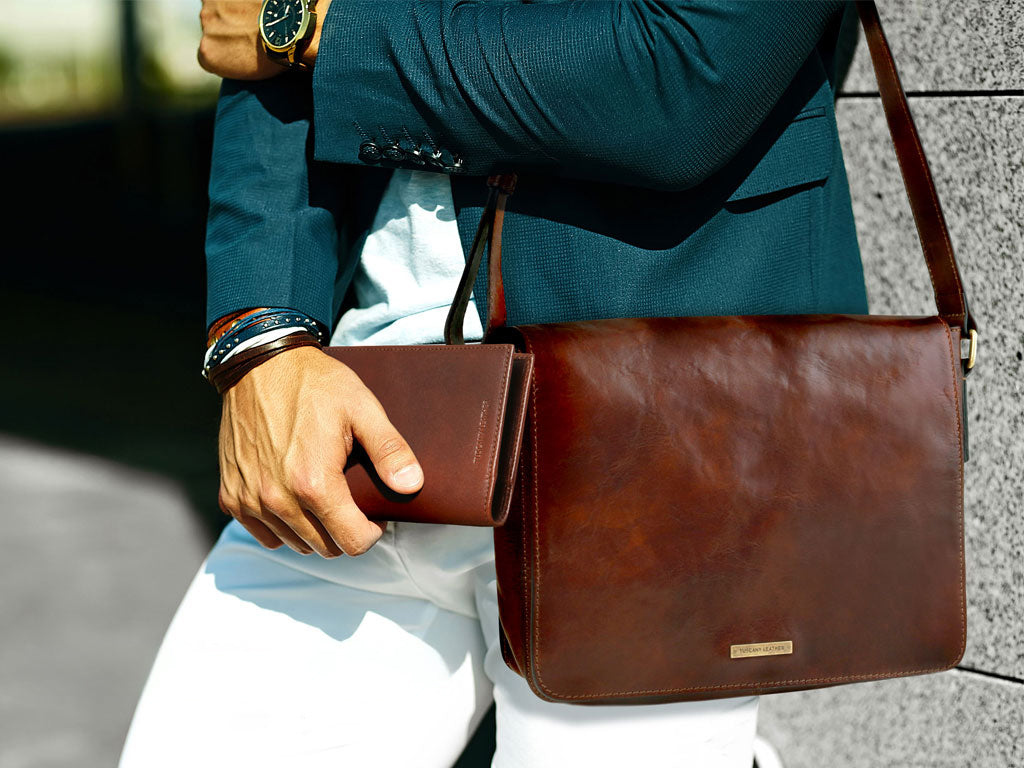
The History of Italian Leather Bags
Share
Italian leather bags have long been synonymous with elegance, craftsmanship, and timeless style. From the busy streets of Florence to the high-end boutiques of Milan, these luxurious accessories have captivated fashion enthusiasts around the world. But have you ever wondered about the origins of Italian leather bags and the rich history behind their craftsmanship? Let's take a journey back in time to explore the fascinating story behind these iconic fashion pieces.
Ancient Rome: The Birthplace of Leather Craftsmanship
The story of Italian leather bags traces back to ancient Rome when the art of leather craftsmanship was born. The Romans were known for their exceptional leatherworking skills, using this versatile material to create everything from sandals to military equipment. The Romans discovered that the naturally abundant supply of cattle in their empire provided them with an excellent base material for creating durable and stylish accessories.
The Renaissance: The Golden Era of Italian Leatherworking
It was during the Renaissance period that Italian leatherworking flourished, reaching new heights of creativity and innovation. Leading craftsmen from cities like Florence and Venice began to refine traditional leatherworking techniques and incorporate intricate designs. The Medici family, known for their patronage of the arts, played a key role in promoting the development of leather goods, including bags and accessories.
Florence: The Epitome of Italian Leather Excellence
Florence has always been considered the heart of Italian leather craftsmanship. The city's skilled artisans, known as "Maestri Pellettieri," have passed down their expertise from generation to generation, ensuring the preservation of traditional techniques. Florentine leather bags are celebrated for their superior quality, exquisite detailing, and meticulous hand-stitching.
The 20th Century: Italian Leather Bags Go Global
In the 20th century, Italian leather bags gained international recognition and became sought-after fashion accessories worldwide. Italian designers such as Gucci, Prada, and Fendi rose to prominence, showcasing their creativity and innovation in the realm of leather goods. The blend of traditional craftsmanship with contemporary design elements captivated fashion-conscious individuals worldwide, making Italian leather bags a symbol of luxury and prestige.
Italian Leather: Unmatched Quality and Durability
What sets Italian leather bags apart is the exceptional quality and durability of the material itself. Italian leather is renowned for its superior craftsmanship and the use of traditional tanning methods that have been perfected over centuries. The leather undergoes a meticulous process that involves vegetable tanning, a method known for its eco-friendly nature and ability to create a distinct patina over time.
The Art of Hand-Stitching
One of the distinguishing features of Italian leather bags is the art of hand-stitching. Skilled artisans spend countless hours meticulously stitching together each piece, ensuring longevity and impeccable quality. The attention to detail and the use of high-quality thread contribute to the durability and timeless beauty of Italian leather bags.
Innovation Meets Tradition
Italian leather bags are not just about tradition; they also embrace innovation. Designers continuously push the boundaries of creativity, experimenting with new styles, colors, and materials. While the essence of Italian leather bags lies in tradition and craftsmanship, they also adapt to the evolving needs and preferences of modern fashion enthusiasts.
Italian Leather Bags: A Timeless Investment
Investing in an Italian leather bag is not just buying a fashion accessory; it is embracing a piece of history and craftsmanship. These bags are built to withstand the test of time and remain in style for decades. While other fashion items may come and go, an Italian leather bag is a timeless investment that will never go out of style. Browse our collection here of handmade Italian leather goods to find your dream bag.
Caring for Your Italian Leather Bag
To ensure the longevity of your Italian leather bag, proper care is essential. Here are some tips to keep your bag in pristine condition:
- Avoid exposure to direct sunlight and extreme temperatures, as they can damage the leather.
- Store your bag in a cool, dry place, preferably in a dust bag, to prevent scratches and dust accumulation.
- Regularly clean the leather with a soft, damp cloth and use a leather conditioner to maintain its suppleness.
- Avoid overstuffing your bag, as it can cause stretching and distort its shape.
To help you care for your leather products, discover our TL Care range of leather care products - everything you need to maintain and protect your cherished leather goods.
Where to Find Authentic Italian Leather Bags
When it comes to purchasing authentic Italian leather bags, it is crucial to find a trusted retailer who values quality and craftsmanship. Visiting specialty boutiques or online stores such as San Rocco Italia is an excellent way to ensure the authenticity of your purchase. You can find our selection of Tuscany Leather bags here, all made in Italy and delivered to your door.
Your Timeless Fashion Companion
In conclusion, the history of Italian leather bags is a testament to the enduring allure of these exquisite fashion accessories. From ancient Rome to the modern fashion capitals, Italian leather craftsmanship has evolved and adapted throughout the centuries. The quality, durability, and timeless style of Italian leather bags make them the perfect companion for any fashion-conscious individual. Invest in a piece of Italian heritage and elevate your style with an authentic Italian leather bag today!
Please feel free to visit one of our fellow Shopify user's stores by clicking here. Kindly note that this is a promotional link, and we cannot be held responsible for the content of the linked store.


